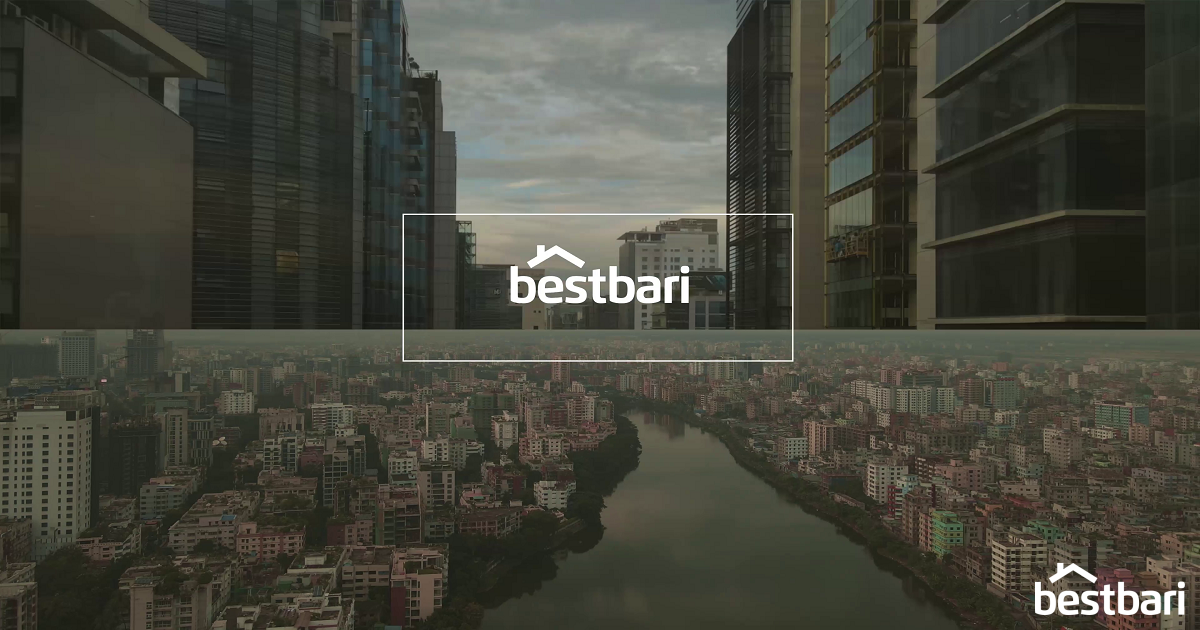
Reading time: 6 minutes, Category: Finance & Economics
Are you a real estate developer or property agent looking to boost the value of your flat for sale in Dhaka? Then look no further, BestBaritrusted team of specialists is here to help you sell BD properties flats at the best prices.
Investing in the underdeveloped regions of Dhaka, including areas on the outskirts such as Purbachal or emerging zones like Uttara Sector-18, presents a compelling proposition brimming with unique prospects and challenges. As Dhaka’s urban footprint extends further from the city centre, these locales are garnering increased attention from investors seeking untapped growth potential.
This comprehensive blog post undertakes an in-depth exploration of the advantages and drawbacks inherent in such investments, delving into each facet with a magnifying lens while integrating pertinent statistics and references to provide a thorough overview.
Investment Opportunities in Dhaka’s Developing Areas
1. Affordability
The allure of underdeveloped areas often lies in their significantly lower entry costs compared to established neighbourhoods. For example, land prices in Purbachal range approximately between BDT 5-10 lakh per katha, presenting a stark contrast to the soaring rates prevalent in central Dhaka. In areas like Gulshan, land prices can command upwards of BDT 50 lakh per katha. This substantial difference in cost provides investors and homebuyers with an attractive opportunity to acquire property at a more affordable rate, potentially offering higher returns on investment in the long run.
2. Growth Potential
According to data from the Bangladesh Bureau of Statistics, urban growth rates in areas surrounding Dhaka surpass an impressive 6%, highlighting the significant potential for property value appreciation as infrastructure and development initiatives advance. These statistics vividly depict the burgeoning growth trajectory of these underdeveloped regions, suggesting promising opportunities for investors and developers alike. As urbanization continues to expand, fuelled by economic development and population growth, these areas are poised to undergo substantial transformation, making them attractive prospects for long-term property investment.
3. Government Incentives
The government’s proactive approach to fostering development is evident through a range of incentives aimed at stimulating investments in underdeveloped regions. Initiatives such as tax exemptions and infrastructural support, exemplified by projects like the “One House One Farm” initiative, serve as catalysts for growth, indirectly enhancing the appeal of nearby underdeveloped urban zones. By providing incentives and support to investors and developers, the government is facilitating the transformation of these areas, unlocking their potential for economic prosperity and sustainable urban development.
4. Scope for Large-scale Projects
Underdeveloped areas present vast expanses of untapped land, ripe for ambitious developmental ventures. The government’s ambitious plan to establish 100 economic zones, including strategic locations near Dhaka such as the Araihazar Economic Zone, underscores the immense potential for large-scale projects poised to reshape the urban landscape. With ample land available and supportive government initiatives in place, these underdeveloped areas offer fertile ground for innovative projects that can drive economic growth, create employment opportunities, and catalyse infrastructural development, thereby contributing to the overall prosperity of the region.
5. Societal Benefits
Investments in underdeveloped areas offer more than just financial gains; they promise substantial societal improvements as well. The development of satellite cities like Purbachal, projected to accommodate over a million residents, holds the promise of alleviating Dhaka’s acute housing crisis, thereby contributing to broader social welfare. By providing affordable housing options and relieving congestion in the capital city, these developments not only improve living standards but also enhance access to essential services and amenities for residents. Moreover, they promote inclusive urbanization and sustainable growth, fostering a more equitable and resilient society for generations to come.
Challenges when Investing in Dhaka’s Developing Areas
1. Investment Risk
The investment landscape in underdeveloped areas is marked by considerable risks. Political uncertainties and economic instabilities have the potential to exert significant influence on investment returns, underlining the importance of adopting a cautious and deliberate approach. However, now with the political election done in early 2024, there is less political uncertainty in Bangladesh, which provides better commercial opportunities for the private sector.
2. Infrastructure Challenges
A notable impediment to investments in these regions stems from the dearth of established infrastructure. Despite ongoing development efforts, areas like Uttara Sector-18 grapple with fundamental issues such as erratic water supply and unreliable road networks, presenting substantial challenges for prospective investors to overcome. Addressing these infrastructure deficiencies is crucial for unlocking the full potential of underdeveloped areas and attracting significant investment.
3. Gradual Appreciation
Investments in underdeveloped areas often entail a protracted timeline for appreciable returns. Insights from the Dhaka Chamber of Commerce and Industry (DCCI) suggest that real estate in newly developed zones may require over a decade to realize substantial appreciation. This underscores the necessity for a patient, long-term investment outlook when considering ventures in these regions. While the potential for growth exists, investors must exercise patience and resilience as they navigate the developmental journey of underdeveloped areas, understanding that significant returns may take time to materialize.
4. Regulatory Hurdles
Navigating the regulatory landscape poses formidable challenges for investors, with bureaucratic red tape complicating processes such as land acquisition and development permissions. The Rajuk’s Detailed Area Plan (DAP) for Dhaka has encountered numerous revisions and delays, further complicating investment planning efforts. These hurdles underscore the importance of thorough due diligence and strategic planning when venturing into underdeveloped areas. Investors must be prepared to navigate complex regulatory frameworks and adapt to evolving policies to ensure the success of their projects.
5. Market Volatility
The real estate market in emerging zones is characterized by pronounced volatility, influenced by factors such as the pace of infrastructure development and prevailing economic conditions. Fluctuations in market demand, as highlighted by the Real Estate & Housing Association of Bangladesh (REHAB), underscore the inherent unpredictability of investments in these regions. Investors must remain vigilant and adaptable, closely monitoring market trends and adjusting their strategies accordingly to navigate the dynamic landscape of emerging real estate markets effectively.
Navigating Investments in Emerging Areas

Effectively navigating investments in Dhaka’s underdeveloped areas necessitates a strategic approach informed by meticulous research and a nuanced understanding of the local market dynamics.
1. In-depth Market Research: Conducting thorough analysis of market trends, governmental policies, and infrastructure development plans is paramount for informed decision-making.
2. Community Engagement: Building meaningful relationships with local communities and stakeholders can offer invaluable insights into the region’s potential and challenges, facilitating more informed investment strategies.
3. Portfolio Diversification: Balancing investments in underdeveloped areas with more stable, established real estate assets can mitigate risks and optimize returns, ensuring a well-rounded investment portfolio.
Conclusion
Investing in Dhaka’s developing areas presents a multifaceted landscape with both promise and peril. While the allure of low entry costs and substantial growth potential is undeniably compelling, investors must navigate a myriad of challenges, including infrastructure deficits, regulatory complexities, and market uncertainties. Through meticulous planning, thorough risk assessment, and a steadfast commitment to long-term vision, investments in these burgeoning regions can yield significant dividends, contributing to Dhaka’s urban expansion and economic growth.
We hope you found this article about Investing Dhaka’s Developing Areas valuable. If you found this article beneficial, you may like to check out our other News and Articles and in particular our blog post about Property Development in Dhaka.
BestBari is the premium real estate company of Bangladesh. If you would like to access the most exclusive BD properties and premium flat sales for in Dhaka, then contact us to book a complimentary consultation with our team of trusted property specialists.











